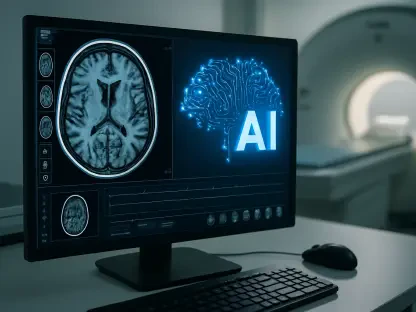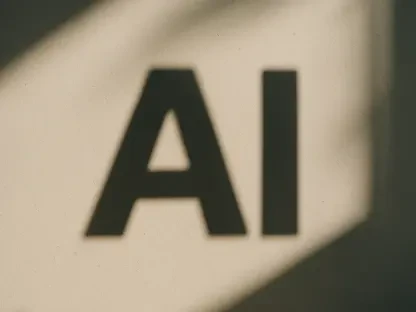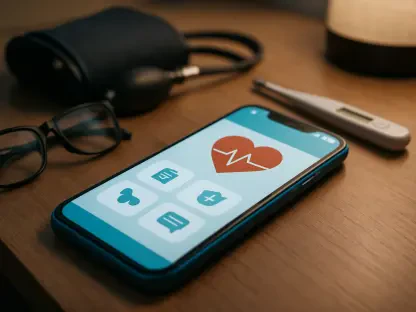Listen to the Article
Every industry has adapted and implemented artificial intelligence, machine learning, and similar technologies where applicable, and healthcare is no different. The sector has taken it one step further and provided these advanced tools directly to its patients.
The age of convenience is here. Artificial intelligence has encouraged medical organizations to research, diagnose, treat, and monitor their patients in a new, better, and faster way. Inexpensive medical tools, remote care options, and rapid diagnostics with treatment suggestions—these are a few benefits modern technology brings to the health industry.
This article will explore trending health technology, how medical centers can use it, and its impact on health organizations.
Top Five Healthcare Technology Trends in 2025
Below are popular innovations taking the health sector by storm.
Artificial Intelligence
Artificial intelligence, deep learning, and language processing have all had a positive impact on various parts of healthcare.
This technology has made a sizable dent in the healthcare market size, as it’s calculated to reach $613.81 billion by 2034 according to Precedence Research. This AI technology in hospitals and clinics goes beyond surface-level software upgrades; it spans across multiple departments within health, such as:
Medical training.
Workforce efficiency.
Security protocols.
Maintenance.
Diagnostics and treatment plans.
Administration.
Medical researchers and practitioners have now successfully integrated the technology into day-to-day cases. AI can analyze medical records more accurately, enable early detection of illnesses like cancers, and predict the most effective treatment solutions. This leads to faster, smarter, and more attentive care to those who need it most: patients.
Virtual Reality and Augmented Reality
Virtual reality creates a complete simulation separate from reality through the use of specialized goggles, giving the user the perception of reality that isn’t there. While augmented reality creates digital layers over reality itself, like a filter.
Both technologies allow students and professionals to practice and improve their visual perception skills in a risk-free environment.
Imagine a class of young doctors studying and attending training sessions with virtual reality headsets. They would see their medical notes come to life in detailed and accurate projections, and view complex procedures before performing them. In the long run, this reduces the chances of injuries or risks in high-risk operations like removing tumors and performing C-sections.
The immersive experience is advantageous for:
Training.
Conducting surgical simulation.
Patient care and treatment.
Consultation.
Although this technology is still in its infancy, it is projected to have a big impact on healthcare. According to the latest report by Fortune Business Insights, the market value is estimated to reach $46.37 billion by 2032.
Machine Learning in Medicine Development
In drug design, this technology is capable of analyzing large quantities of samples, calculating their components and effectiveness, as well as their drug compounds, in record time.
Traditionally, this process of drug discovery would require manual labor, trial and error, and multiple screenings, which would be time-consuming and expensive to execute.
This technology comes in handy in cases of creating a cure or effective medicine in record time against a virus outbreak or pandemic. Machine learning in healthcare can screen multiple samples against a large database of components, resulting in faster processing and a higher success rate.
Telehealth and the Internet of Medical Things
The days of searching the net for your symptoms are over; patients can now consult with trusted medical professionals, receive prescriptions, and update doctors on ongoing treatments or their recovery journey through any communication device.
This provides an accessible option for citizens to receive personalized, quality health care without waiting in line, driving through traffic, or being physically present at medical facilities.
The Internet of Medical Things network, dubbed the IoT of remote medical care, is the connectivity between wireless medical devices, hardware machines, and software applications. Without devices like wearable sensors and blood pressure monitors, doctors would be unable to monitor patients’ heart rate, blood pressure, or oxygen levels.
If any issues occur, the facility could send for emergency transportation, and primary doctors would be instantly informed and prepared to act once the patient arrives. For facilities embracing remote medical care, timely patient monitoring could provide precious moments to save a life.
This trend has especially been popular among bedridden patients, those who have chronic conditions that limit their ability to travel, and those living in remote areas, away from any health facilities.
3D Printing and 3D Bioprinting
The same technology that uses plastic and metal to print objects for everyday use has been modified to suit the health industry. Now, 3D printing is used to print essential medical objects such as prosthetics, dental casts, surgical tools, and implants.
Bioprinting takes the technology and fundamental properties to new heights by focusing on living cells rather than inanimate objects. Bioprinting engineers use biological materials like cells, bioink, and molecules to print tissues and organs.
Penn State researchers have developed a method to fabricate functional tissue 10x faster using spheroids. This method revolutionizes the already groundbreaking technology, bringing bioprinting into regenerative medicine.
Before bioprinting, patients had to be thoroughly evaluated to assess blood type, tissue compatibility, and medical stability to be considered for organ transplantation and added to a waiting list for a donor. With bioprinting, this operation could be easily accessible, customized to the patient, and result in reduced chances of organ failure.
Regarding prosthetics, the additional manufactured body parts would often be mass-produced in standard sizes, resulting in uncomfortable-to-fit prosthetics. While they might obtain adjustable components, the more affordable parts are usually not tailor-made. 3D printing offers customizable prosthetics at affordable rates.
Invest in Reliable Technology in Healthcare
As new technologies are invented in hopes of bettering healthcare, oftentimes, it’s difficult to distinguish whether a trending topic is helpful or harmful until it’s too late. The cutting-edge technology behind these trends has proven its worth in the health sector through positive results, accessibility, and improved overall patient care.
For healthcare organizations looking for a helping hand in these health-centered trending technologies, ensure time is taken to thoroughly research, plan implementation strategies, and schedule training sessions for health professionals to get better acquainted with the technology.
The key to using these advancements to their full potential lies in a complete understanding of the technology and accurate execution.
Final Thoughts
The digital revolution in healthcare is not a distant future, it’s a reality that is currently happening in hospitals and medical research centers across the world. AI assisting in medical diagnostics, immersive therapy with virtual reality, and the precision and accuracy of 3D bioprinting all uphold the concepts of healing technology.
These innovations have proven their worth through their results in telehealth and speedy drug development for patients and practitioners alike. While these tools have improved access, speed, and medical practice, health organizations must also prioritize accuracy, ethical use, and patient-focused solutions.









